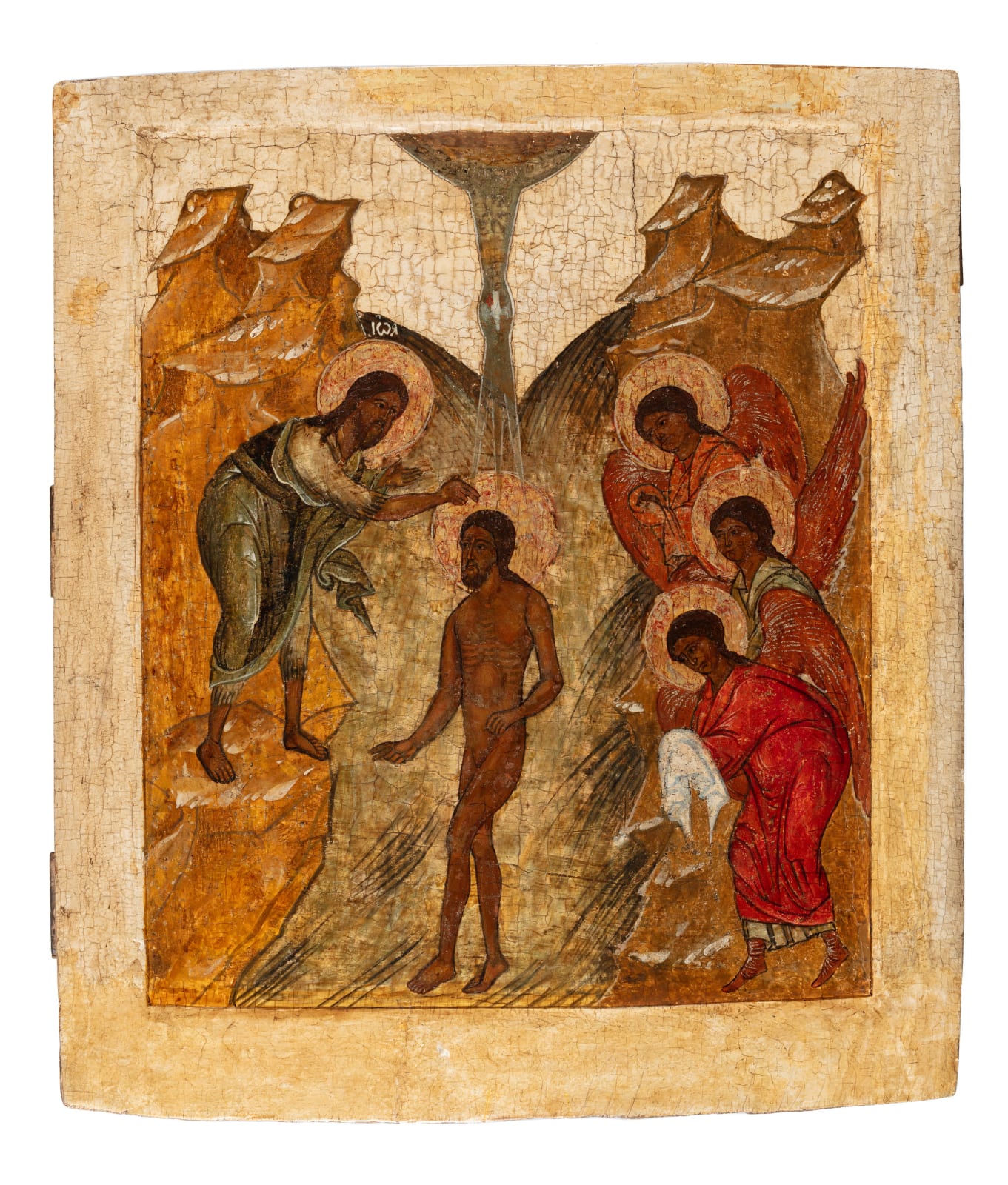The Baptism, circa 1600
Feast Day: 6th January (Theophany)
The great Feast of Epiphany (known as Theophany in Orthodoxy)[1] is celebrated in Orthodoxy on January 6th. The imagery first appeared in the 3rd century and the iconography as we still know it was complete by the 6th century. Christ stands in the river Jordan, with John the Baptist on the left and three angels on the right. Above is the rim of a circle of light, representing the divine world, a ray descending with the Holy Spirit in the form of a dove. To eastern Christians, the baptism of Christ represents his manifestation as the son of God to man.
The angels are not mentioned in the New Testament texts, but are included from the divine service of the day.[2] The key traditional theological interpretation of the event is that the narrative signifies the manifestation (epiphany) of the Holy Trinity on Earth, and the introduction of the sacrament of Baptism.[3]
The icon is remarkable for its use of colours derived almost entirely from ochre. It ranges in colour from yellow to deep orange or brown. It is also a light brownish yellow. A variant of ochre has a reddish tint known as red ochre produced from dehydrated iron oxide. These are applied in thin transparent washes allowing light to reflect from the ivory gesso ground. The resulting overall harmony achieves great beauty.
[1] Theophany in Greek means the manifestation of God to man, while epiphany is a more generic term meaning ‘manifestation from above’.
[2] Lossky, V. & Ouspensky, The Meaning of Icons p. 164.
[3] ibid

